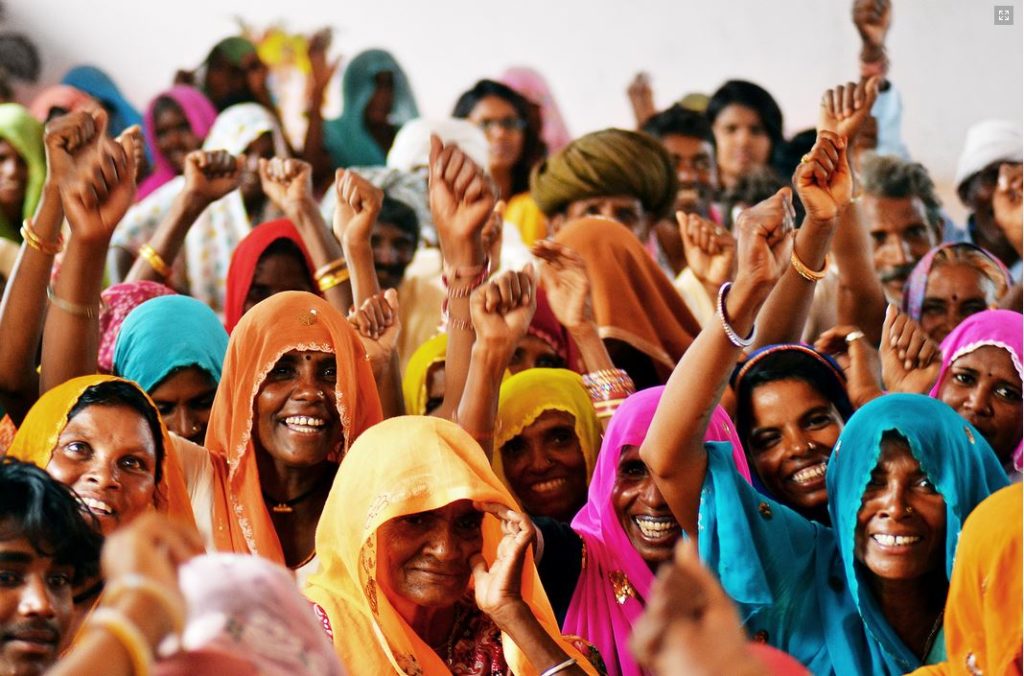
Why Dalits Need ONE Main Political Party?
At present, there are many political parties those claim to represent Dalits. Would it be good if Dalits had one large political party instead of many small?
After the Great Mass conversion to Buddhism in 1956, Babasaheb Ambedkar planned to convert All India Scheduled Caste Federation (AISCF) into a broad-based political party which he designated as the Republican Party of India (RPI). The constitution of the RPI is available. Due to his untimely death, the party did not come into existence in his lifetime and Shivraj played a leading role in the formation of the RPI.
In the beginning, political party RPI also had electoral success, but then it splintered into several factions diluting its power to negotiate with other stakeholders. It was reduced to the position of begging for a few seats.
The ilk of contemporary leaders of RPI shows this pattern of sycophancy and powerlessness. The SCs constitute 20 percent of the India’s population. However, because of the caste system, it is not the single organized political class. It is not even a homogeneous social class, because of the caste divisions within their own ranks.
This division between the SCs is exploited by the Hindutva brigade to their advantage. The division among them is the most important device of the both national and regional parties all over India.
One can pick up any Indian state and can see the same pattern. In Maharashtra, dominant parties have been exploiting the caste based division between Mahars, Chamars, and Mangs; the three dominant SC castes.
The picture is the same in Punjab; the division between the Ravidasis and Ramdasis (Chamars and Chudas). It is the same pattern in the southern states. In Tamil Nadu, it is between Pariah, Pallars, and Chhakliyars. That is the reason; Babasaheb Ambedkar did not want to disband All India Scheduled Caste Federation (AISCF) as the social organization. Babasaheb Ambedkar conceived an alliance between the SCs, OBCs, and converted minorities, and other progressive groups.
Babasaheb Ambedkar worked very hard to realise the goal of his Guru, Jotiba Phuley, to bring together Shudras (OBCs) and Ati-Shudras (SCs). However, the OBC movement fizzled out after the OBC stalwarts like Punjabrao Deshmukh were co-opted by the Congress Party.
Babasaheb Ambedkar encouraged the OBCs to form All India Backward Class Federation (AIBCF) to fight for their rights. The OBC movements in UP and Bihar bore some results, but it remained largely political, without having social movement at its base and core. Kanshiram-Khaparde-Dinabhama started BAMCEF (Backward Classes and Minorities Communities Employee Federation) to form the social class of India’s exploited majority to fight for their constitutional rights.
Kanshiram started the Bahujan Samaj Party (BSP) to access political power for the Backward Classes and the Converted Minorities. Even with a small mobilisation of the Backward Classes and minorities, the electoral gains for the BSP are huge. It has been successful in checkmating the Hindutva (Brahminical politics) fully. But then the original principles of the BAMCEF needs further rooting in the Indian politics and Indian society.
The BSP organizational structure reflected the BAMCEF principles and sharing of power by all the stakeholders. The BSP is largely confined to the SCs, and it has come to power due to its solid base of support from the SCs. Only the large-scale formation of an alliance between the SCs from all over India has the power to establish true democracy in India. Among the OBCs, the dominant castes have been taking advantage of their dominant numerical positions and they have been playing the same games that Hindutva politics played before.
In Maharashtra, the OBC Maratha leaders have exploited not only the lower class Marathas, but other OBC castes and their aspirations. Therefore, we see leaders from marginalised OBC caste joining hands with the BSP in the early days. It is difficult to say that the dominant OBC castes in different states will join the BSP force as they have their established political apparatus, but their are marginalized OBC castes which will be keen to join the alliance.
The greatest thing that the BAMCEF and the BSP have done is to change the entire political game in India. Both the Congress and the BJP cannot ignore the SCs and OBCs, though both of them have been Brahmin-Bania-Thakur parties which account for just less than 7 percent of India’s population.
However, they have been successful in maintaining their power due to their political organizations which are built on exploiting divisions between the SCs and OBCs. Just imagine, if there is a rise in the consciousness of the SCs, OBCs and the converted minorities just by a few degrees, there will be 360-degree change in the entire politics of India. And that is why; there is a need of just ONE political party structure for the SCs, STs, OBCs, and converted minorities to safeguard the interests of India’s majority.
So, what do you think? Is one single political party or many fragments? What is good for Dalits?
Author – Mangesh Dhaiwale, Human Rights Activist



+ There are no comments
Add yours